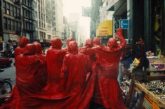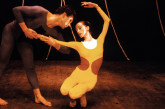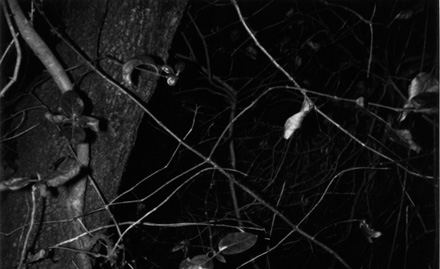
Rodney Graham’s oeuvre since the late 1970’s can only be understood as the result of an unplanned wander through an unmapped territory (the forest), in which serendipity findings determined each step ahead. His biography as an artist is the sum and product of the inputs he randomly collected along the way and the outputs that those findings triggered in his mind. Many of his works reflect this by appropriating, manipulating or clearly referring to those inputs, whilst he used literature, photography, film, music, painting, sculpture and other means to convey the outputs.
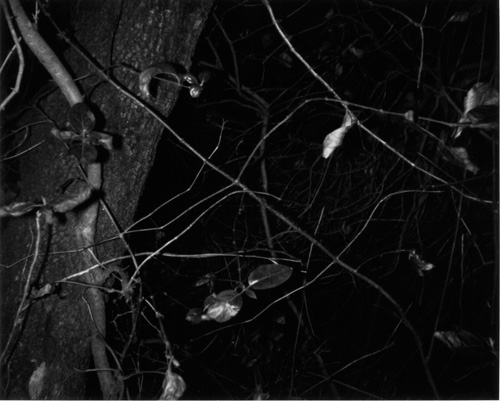
One extraordinary part of Graham’s oeuvre are his works based on books by authors such as Georg Büchner, Edgar Allan Poe, Sigmund Freud, Ian Fleming, Herman Melville and several others. These books are themselves casual encounters in Graham’s life, and often revolve around ideas of peripatetic wanders, physical or mental. Graham re-presents these books in a manner that reveals the way he rambles through the text and his mental drifts and chance findings while doing so. His digressions, interpolations, loop-readings of certain passages, reading devices, Judd-like bookshelves, and other interventions denote his permanent mind-set of roving thoughts and altered states of perception, of someone who is consciously lost deep inside the forest.
In 1835, Georg Büchner wrote the novel Lenz, based on the visit that German poet Jacob Michael Reinhold Lenz paid to pastor Oberlin. Lenz stayed with Oberlin for a couple of months, in the forest village where he lived, trying to find peace of mind and clarity of thought and to get away from the anxiety that he felt in the city. Lenz and Oberlin talked about Lenz’s doubts and disorientation while they took long walks in the surrounding forest, but whilst he felt initially more at peace, the anxiety kept coming back. In 1983, Rodney Graham rearranged the layout of an English translation of Lenz so that the text on page 5 ended with the word “through”, whilst page 2 (which was printed on the same sheet of paper), started with “the forest”. Simply by turning that sheet around, one could enter in an endless loop which mimicked Lenz’s own disorientation “through the forest”. Later, in 1993, Graham designed and had a craftsman build the Reading Machine for Lenz (1993), a cinematic device which enabled and accentuated the circular, endless and dizzying reading of the text and the feeling of existential disorientation that it referred to.
Another of his earlier works including literary appropriations is The System of Landor’s Cottage – A Pendant to Poe’s Last Story, from 1987. Graham took a short story in which Edgar Allan Poe gives a detailed description of a beautiful country cottage, and turned it into a 300-page book by adding the description of an annex to that cottage and a series of digressions motivated by that annex and its several rooms, including appropriations of texts by other authors. In this case, it is not the forest itself but rather what he finds in the forest that became the central element of the piece. However, inside that cottage and its annex, the spiraling sequence of rooms and events becomes as much an image of the disorientation produced by the forest as the forest itself.
In [The Piazza 4.1] (1989), Graham introduces a passage of his own into Herman Melville’s short story The Piazza, in the form of a bookmark. Again, in this story from 1856, the narrator describes a cabin in the woods and how it lacks a “piazza”, or veranda, to overlook the wonderful natural scenery. He also tells about the view of another cabin in the distance, amidst the woods, which seems to be the perfect spot and a sort of sublime destination. He decides to walk through the forest for months until he reaches that haven, only to find when he arrives that the house is old and shabby and the lady who lives in it looked at his own house from her window and dreamt of it as her own version of paradise. Curiously enough, Graham’s addition to this text bears no reference at all to the forest itself, but to a column or pillar of the piazza, with a detailed description of its ornaments, very much in the style of Melville himself. The forest, in this case, includes and mediates between two possibilities, here and there, reality and potential, while distorting the perspective of one another.
The forest appears in Graham’s work through literary references, but also in more literal and graphic ways, in both photographic and film works. 75 Polaroids (1976) was the first of a number of nocturnal illuminations of forests that Graham did. In this case, he used a Polaroid camera with flash to illuminate his way through a pitch-dark mesh of tangled branches. In 1995, Graham repeated this experience in the mystical mountain of Montserrat, near Barcelona. In Illuminated Ravine (1979), Two Generators (1984) and Edge of a Wood (1999) – all three film works – Graham illuminated sections of woods at night by means of invasive and loud mechanical devices, and filmed the result.
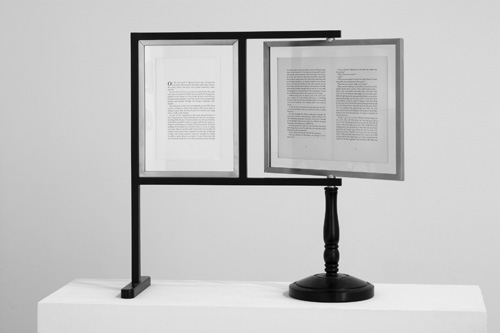
Graham’s usage of the forest in his work is by no means romantic or bucolic. Forests may be symbolically appealing to Rodney Graham, but not because he intends to claim their natural wonder or argue against civilization of Nature. It is true that they are dense and disorienting precisely because of the lack of human signs and mapping, but that is not the issue at all. Forests are appealing insofar they are the graphic translation of a modus vivendi.
Feeling lost is a brilliant way to determine one’s path in life. Only by being lost and fully aware of it, may Rodney Graham be so open to external input as to allow himself to absorb and use information and focus on the process itself, rather than on a predetermined aim. Only that way he is open to experiment in new directions, work with new means, and define his identity as an artist as he juggles with all the labels.
Gonçalo Sousa Pinto
D’ARS year 49/nr 200/winter 2009

